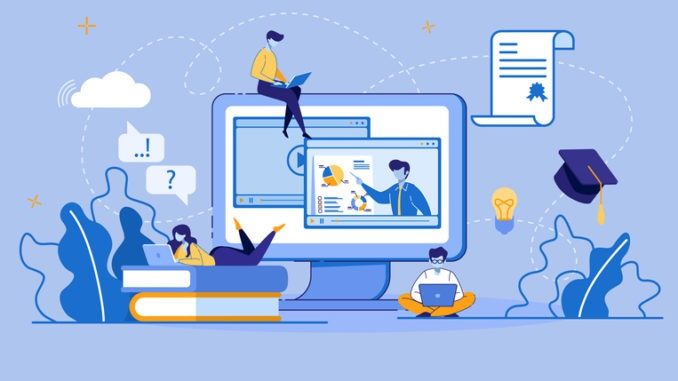
It is estimated that 1.2 billion children, in 186 countries, were affected by school closures due to the pandemic. The closure of schools led to a shift to remote learning, but this change drew attention to the debate over whether the increasing use of edtech is beneficial for pupils
Even before COVID-19, there was already high growth and adoption in education technology, with global edtech investments reaching US$18.66 billion in 2019 and the overall market for online education projected to reach $350 Billion by 2025 – but, during the pandemic, remote learning became a lifeline for education.
This digital technology offered entirely new answers to the questions of what people learn, how they learn, and where and when they learn. Edtech enabled teachers and students to access specialised materials well beyond textbooks, in multiple formats and in ways that bridged time and space.
However, the COVID-19 crisis struck at a point when most schools were not equipped to implement online learning efficiently – in fact, most of the education systems covered by the OECD’s 2018 round of the Programme for International Student Assessment (PISA) were not ready for the world of digital learning opportunities. A quarter of headteachers across the OECD said that shortages, or inadequacy of digital technology, was hindering learning quite a bit or a lot, a figure that ranged from two per cent in Singapore to 30% in France and Italy.
According to OECD’s Teaching and Learning International Survey (TALIS) in 2018 just 53% of teachers, on average, let their students frequently or always use information and communication technologies (ICT) for projects or classwork. However, in Denmark and New Zealand the share reaches 80% or more, and in Finland, Israel and Romania these numbers have more than doubled over the five years leading up to the survey.
The survey also found that it was younger teachers who used technology more frequently in the classroom, and so did teachers for whom technology was included in their formal training. However, only 60% of teachers received professional development in ICT in the year preceding the survey, and 18% reported a high need for development in this area.
Pros and cons
This inexperience with using edtech meant that, when COVID-19 struck, many schools and teachers were unprepared to switch to a remote learning environment. “People who never expected – nor ever wanted – to use digital technology to communicate or work now must, and so they are learning how,” explains Sean Michael Morris, director of the Digital Pedagogy Lab at the University of Colorado Denver. “We could look at this integration of technologies into family life in a positive light, in that the use of these technologies at home necessitates a new level of digital literacy for everyone; but there’s an equally important downside to the movement of work-related technologies into home life, too. Technology is useful, but it is not a substitute for the classroom.”
It is true to say that technology can be very useful in a learning enivonrment; research has shown that, on average, students retain 25-60% more material when learning online compared to only 8-10% in a classroom. This is mostly due to the students being able to learn faster online; e-learning requires 40-60% less time to learn than in a traditional classroom setting because students can learn at their own pace, going back and re-reading, skipping, or accelerating through concepts as they choose.
However, as argued by Sean, many agree that edtech it is not a replacement for the traditional classroom. The general consensus on children, especially younger ones, is that a structured environment is required for adequate learning because children are more easily distracted.
Time to reinvent?
On the other hand, others have said that this enforced change in the learning landscape should be welcomed, and that some of the temporary methods used should be used on a more permanent basis. “If any time is the best time to reinvent ‘school’ for the better, this time certainly has given us the impetus and rationale – and taken away any excuses built on the narrative that, ‘This is how it has to be, because this is the way we’ve always done it’,” says Sarojani S Mohammed, founder of research group Ed Research Works.
“I think that there’s an opportunity here to collectively see and experience how personalised learning, and true learner-centred instruction, can be accomplished. Parents should consider technology to be a tool for interactive learning, for socialising and for social-emotional health and wellbeing at this time. 2020 is illustrating to us what the true non-negotiables are in our conventional education systems, what our critical goals are for learners and where we do, in fact, have room to innovate.”
Adrian Graham, co-founder of educational app Seesaw, agrees that the increased use of technology should be looked upon positively. “There are two types of technologies that have been particularly powerful during this time. The first is live video calling such as Zoom. The second is technology that supports activities that enable personalised attention for students, even in the midst of so many of our routines being disrupted. Often children are ‘parked’ in front of technology as a passive solitary experience, but I hope people start to see the immense learning potential that technology has to enable them to express their thinking and then receive feedback from people who care about them.”
Although there are positive and negative points on both sides, it is clear that, as COVID cases continue to rise, and more pupils need to isolate at one point or another, the use of technology to aid remote learning will be here to stay.

Be the first to comment